Hero is a Chinese film that falls in the genre of ‘wuxia’ and is directed by Zhang Yimou. It was first released in China, then Hong Kong, before entering the America market. I will look to explore various plot points and recurring themes in this film, relating to the sphere of film studies.
Global Chinese Cinema?
We have to consider which type of global Chinese cinema this film falls into. Firstly, Heroes is produced by production companies from China, to name a few, Zhang Yimou Studio, Beijing New Picture Film etc. The director, Zhang Yimou, is also from China, although he is famous in the West for making ‘art films’, not action films (NJ, 2014). Also, the cast ranges from China actors and actresses to ones from Hong Kong. Jet Li, Donnie Yen and Chen Daoming are from China whereas Tony Leung, Maggie Cheung and Zhang Ziyi are from Hong Kong. Some of these actors and actresses are well known for being action stars, with Jet Li being the most famous due to past huge films that were screened in the West, while the others such as Tony and Maggie are more known for ‘non-action’ roles in Hong Kong Cinema (NJ, 2014). Another point to consider is that the version in China and Hong Kong are voiced in Mandarin by the original cast while the one in the West is voiced in English by other voice actors/actresses. This can also count towards as ‘global’ even though Heroes is not a Hollywood film. As a result of the reasons above, considering the backgrounds of the cast, and other considerations relating to where the film was produced, I would classify Hero as a kind of global Chinese cinema that primarily shows itself as a Chinese film produced in China, which also goes beyond the mainland and Hong Kong. The audience can read the film in different ways, someone who is oblivious of the art form that was being employed in the film will treat it as just another ‘wuxia’ film, whereas others might take a completely different tone.
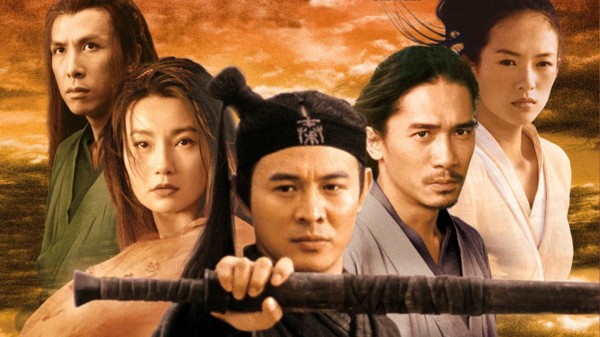
The film uses various recurring themes related to Chinese cinema as well. The star power employed in this film transcend across nations. Jet Li is an accomplished actor and is famous in the West for his action roles. The rest of the cast also commands star power each in their own right. Similar to other wuxia films, Hero uses an extensive range of fight choreography techniques. The concept of space has been expanded, as seen from actors taking flight, and the fights in water. Traditionally, the wuxia genre has always been seen as male-oriented, with the female lead playing second fiddle, or even worse, being the damsel in distress. However, in Hero, the female lead, Flying Snow, is seen as equals to the other 3 assassins. This film thus breaks the stereotype of wuxia films being primarily dominated by males. Another interesting theme that the film takes reference is the engagement of Chinese culture. In the opening scene, an assassin, Long Sky was seen appreciating chess and traditional Chinese music played on a guzhen. The relationship between calligraphy and swordsmanship was also emphasised on many occasions. Both are seen as a definite part of Chinese culture.
The Narrative
The film uses a flashback to tell the story of how Nameless, the main lead, defeated 3 other assassins, Long Sky, Broken Sword and Flying Snow and in doing so, managed to gain an audience with the Qin Emperor. However, there was a twist in the story; the emperor found Nameless’ version of his story to have loopholes and that Nameless himself was actually trying to assassinate the emperor. An interesting part of the storytelling is how the same story is actually told in 3 different ways, eventually with different outcomes. The first version was Nameless’ narrative which proved to be a false one. The second version was how the emperor believed the story would have unfolded. The last version was the true one, when Nameless recall back bits and parts of the story when prompted by the King. Zhang Yimou uses colours to represent the different versions of the story, something which he had used in previous films (Stafford, 2008). The Qin court is painted in black and grey, similar to the fight between Sky and Nameless. Next, red was used as the first version of the story, dictating the fight between Moon (Broken Sword’s servant) and Flying Snow, the stabbing of Broken Sword, and the calligraphy school. Blue was used in the second version which can be seen as represented by wisdom, something that the Qin Emperor allegedly has, as he managed to expose Nameless from the start. Green was then used to show how Broken Sword and Flying Snow met, and the failed assassination attempt. Lastly, white was used in the final version, depicting what actually happened. This includes the death scene of Broken Sword and Flying Snow, and the final interactions between the emperor and Nameless. An interview excerpt with Zhang regarding the use of colours for this film can be seen from this link: http://www.indiewire.com/2004/08/fighting-for-peace-and-art-films-zhang-yimou-on-hero-78697/
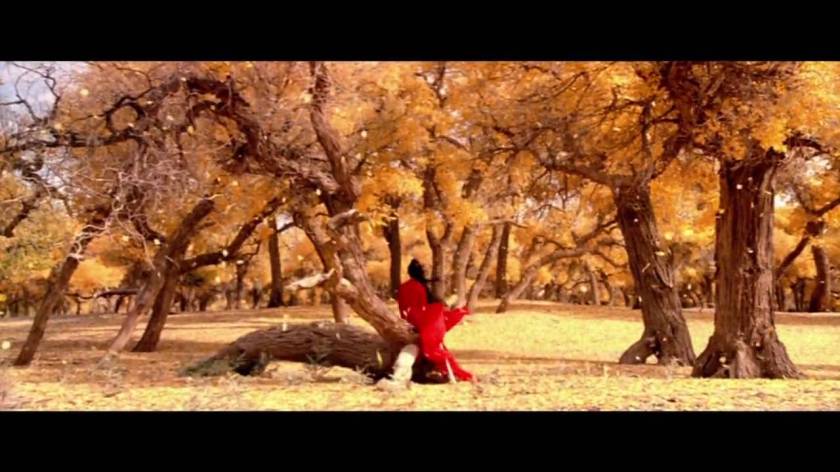
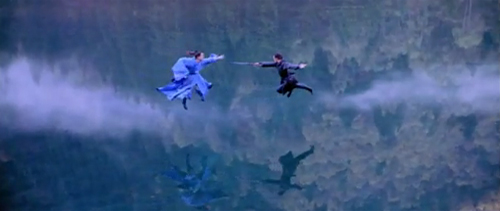
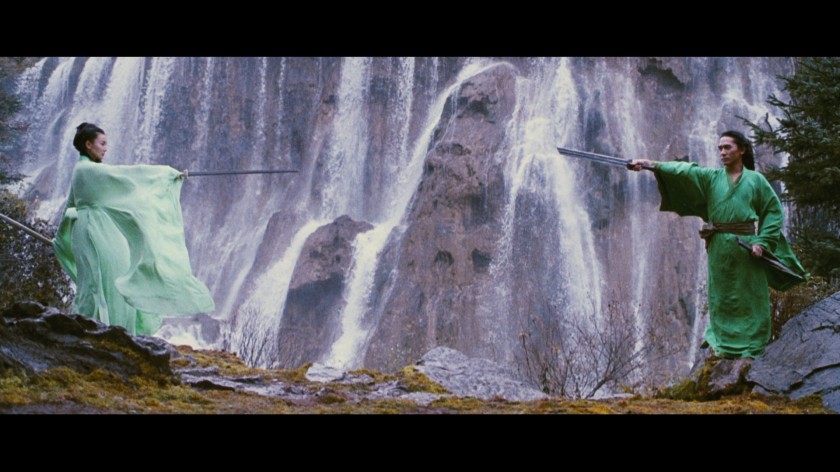
Closing Thoughts
Hero is an extremely thought-provoking film. Towards the end, Nameless eventually bought the idea of Broken Sword, to not kill the emperor because nothing good comes out of conflict and wars. Instead, he should spare the emperor as he is the only one capable of unifying the 6 nations to prevent further bloodshed. However, to accomplish this, an example has to be made out of the assassination attempt. Who then, is the real hero in this film? Could it be the 3 assassins who sacrificed their lives for Nameless’ initial cause to assassinate the emperor? Or was it Nameless himself for sparing the emperor because he saw the greater good in doing so? Or could it be the emperor himself, for understanding Broken Sword’s reason for sparring him and subsequently, Nameless, and thus was able to eventually unify China.
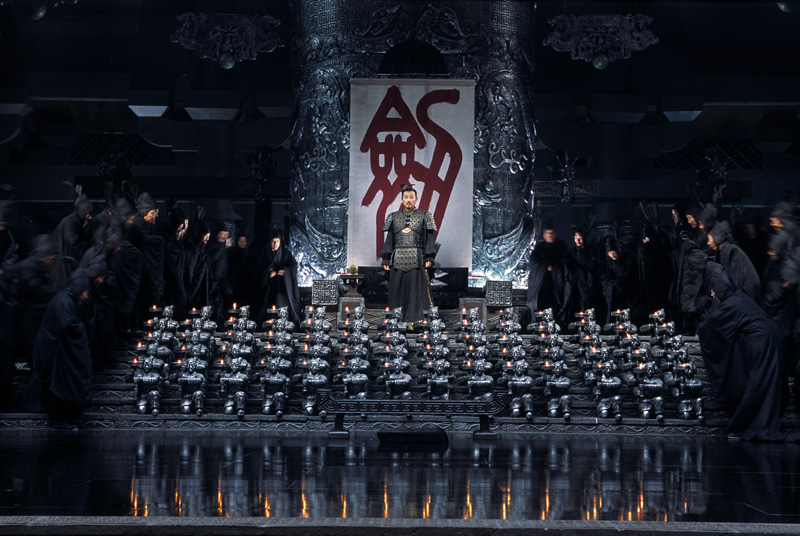
References
Hero (2002) Analysis *Spoiler Alert*. (2014). Mahon Media. Retrieved from http://mahonmedia.blogspot.sg/2014/12/hero-2002-analysis-spoiler-alert.html
Stafford, R. (2008). Hero (China/Hong Kong 2002) – Narrative analysis. The Case for Global Film. Retrieved 19 September 2016, from https://itpworld.wordpress.com/2008/09/15/hero-chinahong-kong-2002-%E2%80%93-narrative-analysis/
Zhang, J. (2005). Hero « Film Quarterly. Filmquarterly.org. Retrieved 19 September 2016, from http://www.filmquarterly.org/2005/06/hero/
Bear, L. (2004). Fighting for Peace (and Art Films), Zhang Yimou on “Hero”. IndieWire. Retrieved 19 September 2016, from http://www.indiewire.com/2004/08/fighting-for-peace-and-art-films-zhang-yimou-on-hero-78697/
Written by: Sebastian Ng Jing Xian (U1531054F)